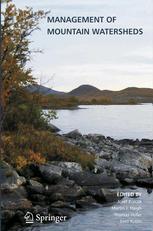

Most ebook files are in PDF format, so you can easily read them using various software such as Foxit Reader or directly on the Google Chrome browser.
Some ebook files are released by publishers in other formats such as .awz, .mobi, .epub, .fb2, etc. You may need to install specific software to read these formats on mobile/PC, such as Calibre.
Please read the tutorial at this link: https://ebookbell.com/faq
We offer FREE conversion to the popular formats you request; however, this may take some time. Therefore, right after payment, please email us, and we will try to provide the service as quickly as possible.
For some exceptional file formats or broken links (if any), please refrain from opening any disputes. Instead, email us first, and we will try to assist within a maximum of 6 hours.
EbookBell Team

4.8
64 reviewsThe book aims to address the interdisciplinary targets of watershed management in mountain regions based on the current knowledge of the subject. The focus of the book is particularly on monitoring, research, and modelling the interactions between the climate, water cycle, and aquatic ecosystem. The issues of watershed management in mountain regions in different parts of Europe, Africa, America and Asia have been the central theme of the book, which is basically divided into five sections: Institutional aspects in control of mountain regions; Stream-flow processes in mountain catchments; Water chemistry and biota in mountain streams and lakes; Effects of forest practices and climate change on hydrological phenomena; and Soil conservation and control of floods and landslides.
The contributions have been peer-reviewed and the interdisciplinary team of authors includes experts from the specialised areas of geography, hydrology, chemistry, biology, forestry, ecology, economy and sociology. The practical applications and management strategies mentioned in the book, deal with the integrated resource management approach, based on the compromise between the development, conservation/ protection of the nature. Finally, the socio-economic and cultural aspects, and ecosystem prevalent in a mountain catchment are discussed in detail.